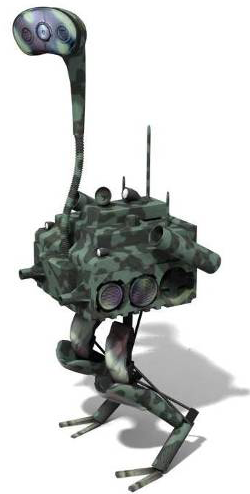MIT Sets Robot Collision Course
When we task a robot with moving its arm from one point in space to another, it is governed by only a few simple equations. After all, there should be no resistance acting on the arm, so the robot can accurately predict when it has arrived at 'Point B.' But when you introduce an obstacle, matters become exponentially more complex and those simple few equations break down.
 In some conditions, it makes sense for an operator to assume control to successfully negotiate the condition, but this doesn't always make sense – especially in manufacturing plants. This is why companies such as Siemens have invested in components such as the Collision Detection Manager for CAE software.
In some conditions, it makes sense for an operator to assume control to successfully negotiate the condition, but this doesn't always make sense – especially in manufacturing plants. This is why companies such as Siemens have invested in components such as the Collision Detection Manager for CAE software.
But real-world physics applications are anything but simple, as evidenced by the (near) famous joke in which a physicist claims that he can predict the winner of any horse race to multiple decimal points – provided it is a perfectly elastic spherical horse moving through a vacuum. Essentially, once you add irregular shapes such as a head, neck and legs, the system becomes too intricate to accurately calculate – as is the case in determining the physics of two complex objects interacting.
So in an effort to enhance the existing collision detection algorithms available for manufacturers, MIT's Computer Science and Artificial Intelligence Laboratory is hard at work developing a new mathematical framework to unify collision with free space movement analysis.
The hope is that this work will result in new, more efficient control algorithms, but it could also come with the added benefit of guaranteeing the stability of algorithms developed through trial and error.
Two recent papers addressed both applications. The first focused on a bipedal, ostrich-like robot called Fast Runner, which is in development at the Florida Institute for Human and Machine Cognition. Here, MIT's technique was used to enhance the trajectory planning already used in the robot.
The second paper, which has made the short list for the best-paper award at this year's Hybrid Systems, Computation and Control conference in April, the team established new stability algorithms for simple mechanical systems encountering collisions.
Russ Tedrake, associate professor of computer science and engineering at MIT explained that Fast Runner demonstrates key problems caused by collision that their team is looking to solve. For example, most roboticists working on a bipedal prototype would assume that the robot's foot strikes the ground in one prescribed sequence such as: heel strike, forefoot strike, heel lift.
“That doesn't work for Fast Runner, because there's a compliant foot that could hit at any number of points, there's joint limits in the leg, there's all kinds of complexity,” Tedrake says. “If you look at all the possible contact configurations the robot could be in, there's 4 million of them. And you can't possibly analyze them all independently.”
The solution is to determine each possible point of contact and generate solutions to each point's unique equations, which is what Tedrake and his team have found a way to do. While the result isn't a comprehensive description of how a robot will behave, it will provide enough information to guarantee stability.
Full story at MIT
Related Articles
Superhuman Machines Emerge from DARPA Robotics Challenge










